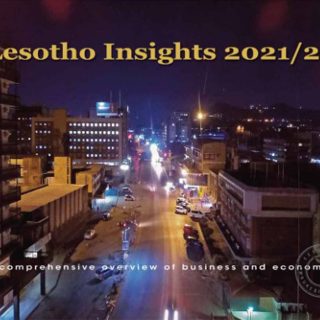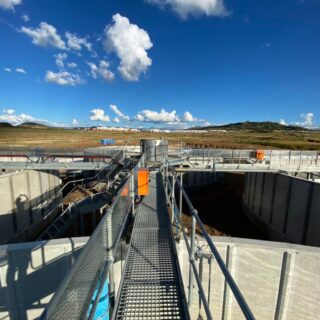This is not a Burial, it’s a Resurrection’: Another film that has gone to put Lesotho on the Map.

Lesotho Insights with additional reporting from the work of Michael Phillips and Zoe Ramushu
The picturesque Mountain Kingdom and its rich cultural heritage has produced splendid settings for some of the best films in recent history, the latest being ‘This is not a burial, it’s a Resurrection’, written, directed and edited by Lesotho’s own Lemohang Jeremiah Mosese, now based in Berlin, Germany. The film is the Mountain Kingdom’s first ever submission to the Oscar Academy Awards and the Golden Globe Awards in the category of Best International Feature Film. Though it did not make it to the podium, the film has gone on to rake in twenty-seven other accolades the special jury award at the Sundance Film Festival in the United States. Mosese’s film has certainly lifted the veil to affirm that Basotho are richly endowed with culture and talent that has what it takes to make it in world class storytelling on the big screen.
Shot in April 2019 at the village of Ha Dinizulu, some fifty kilometers out of Maseru into the foothills of the Maloti mountains. The film is rich in its depiction of Basotho way of life. It shows the splendor of beautiful scenery, the beautiful mountains and valleys of the Kingdom highlighted by the iconic Thabana Li Mmele mountain in central Lesotho. The film opens its storyline with a narrator who reveals to ‘Mantoa, the main actor that “Death has not forgotten you.” The film is tough thematically as well as technically. It is a story about the resilience of the human spirit, shot in the most trying of circumstances.
The storyline revolves around the grief of ‘Mantoa, who has learnt that her last remaining relative, her son, has died in a mining accident in the neighbouring South Africa. Frail, planning and desiring for her own death, ‘Mantoa is given the news that a dam is going to be built in her village. This big dam is going to submerge her village and wash away the graves of all her family and relatives that have died before her. The news become the turning point to ‘Mantoa. She reawakens from waiting for her death and raises a solitary uprising to defend the dead. The film showcases a conflict between the cultural norms and the value that the Basotho tradition bestows on the dead and development for the future in the dam that will benefit the community economically and otherwise. ‘Mantoa will not succumb to the thought of relocating the village nor the cemetery. ‘Mantoa is consoled by a priest who tells her to a place of “total surrender, where faith, courage and will becomes obsolete.”
This film juxtaposes existential questions about the way of life of generations of grandmothers in their lyrical, unhurried and unbothered life that is now being tested by the fast-paced world and all its troubles. The film also explores the universally poignant question that rings ever more urgent on “where is God in all this?” A movie critic and writer, Zoe Ramushu perfectly summarises the plot when she says that: “The tension between Western religion and African traditional beliefs sits comfortably beside patriarchy, colonialism and the struggle between rural and urban life.” In the film, ‘Mantoa’s petite frame is often seen but never heard, which leads us to believe the vow of silence that ‘Mantoa has taken to avoid spewing her bitterness at life and at God. But when she speaks against the project, she becomes a force of nature, relentless, unapologetic and unyielding. She struggles to make sense of her tragedies, and the sacrifices that she has to make, which shake the foundations of her religion.
What is also unique about the film is the unorthodox approach that the filmmaker used to create this awarding winning film. Mosese did not follow conventional norms and broke rules to create the film. First, the main actor is an 80 year old woman. The film has silent moments and very unconventional cinematography. All these attributes, together with the storyline carry themes that blend seamlessly to provide clever and multilayered metaphors that enhance a powerful storyline. Over and above it being a film, ‘This is a not Burial, its a Resurrection’ is an art exhibition on its own.
The cast is made up of mainly Basotho actors or those that were born in Lesotho and made their name in South Africa. Such include Jerry Mofokeng wa Makhetha and Makhaola Ndebele. Other local actors of note in the film include Tseko Monaheng, Sephiwe Ndzima and Silas Monyatsi. Breaking tradition, the lead actor is the internationally decorated, now late Mary Twala Mhlongo. She was 80 when the movie was shot. Mary sadly died shortly after the film first premiered at the Berlinale Forum in 2019.
The brains behind this film, Jeremiah Mosese says what inspired the film was his recollection or Nelson Mandela’s visit to Lesotho in 1995 to ‘…inherit the deal made by the South African apartheid regime and Lesotho’s military junta that put together the Lesotho Highlands Water Project. He adds that one of the villages that were resettled by the construction of the dams was his grandmother’s village. The storyline, though largely fictitious and mostly dramatic, questions the water project and what it has done to affect the foundations of the Basotho culture, especially on death. “I am personally not for or against progress. I am more interested in interrogating the psychological, spiritual and social elements that come with it.” Mosese says. . In the film, Jeremiah brings up a debate on how developmental projects can at times affect the social fabric of life. Through the character of ‘Mantoa, the film advocates for resilience and for society to challenge what is happening in their lives. The filmmaker says the film was also inspired by the work of the late Senegalese filmmaker, Djibril Diop Mambety from his film, ‘Hyenas’.
Mosese’s film first premiered at the Berlinale in Germany and has so far made it to more than twenty international film festivals across the world. The film has been getting very powerful reviews and raked in awards along the way. Mosese’s film and cast has won 27 awards to date in the categories including best African film, best cinematography, best director and others. One of the most prestigious award it has won is the Sundance Special Jury Award. Sundance is the largest independent film festival in the United States. The film was also Lesotho’s first official entry to the Oscar Academy Awards and Golden Globe Awards in the category of Best International Feature Film. ‘This is not a Burial. It’s a Resurrection’ has been released in the South African movie circuit and will be on the DSTV bouquet before the end of 2021.
Another of Lesotho’s highly acclaimed actor, scriptwriter and director featuring in the film, Silas Monyatsi says Mosese’s film is a good ambassador showcasing Lesotho’s potential in the film industry. He looks at Jeremiah as an exceptionally talented thinker who can only blossom with time. “He is a divine soul, and there is so much more we are going to get from him after this movie.” He added. Monyatsi has himself produced independent films like ‘Kau la Poho’, which has premiered in Fespaco, the biggest film festival in Africa. ‘Kau la Poho’ was also very well received at the Zanzibar Film Festival and shown on Tanzanian Television. On the future of film and the arts in Lesotho, Monyatsi laments that starting with the absence of an arts council in the country, there is no legislative and a structural foundation that can pave way for the development of film in Lesotho. What remains abundant is talent, as demonstrated by Jeremiah Mosese and others. This implies that as a country, Lesotho could be losing an opportunity to nurture talent that is endowed with potential to take all forms of art to greater heights.
The first depiction of Lesotho in film dates back to 1975 in a film titled e’Lollipop, shot in Lesotho and New York. American Ninja 4: The Annihilation was the first Hollywood movie to be shot in Lesotho in 1989. In the movie, Silas, the late Eddie Poone and Bimbo Masholugu got roles. In 2013, another epic film titled ‘The Forgotten Kingdom’ written and directed by Andrew Mudge became a household hit that put Lesotho in the pedestal in modern day film. Then comes ‘This is Not a Burial. But a Resurrection’, which is in the league of its own. Special because it has been written, directed and edited by Lesotho’s own Jeremiah Lemohang Mosese and was able to gain commendable international recognition. We wait to see what’s next. Mosese and his producer, Cait Pansegrouw say they are already planning their next film and will be coming back to the Mountain kingdom soon.







